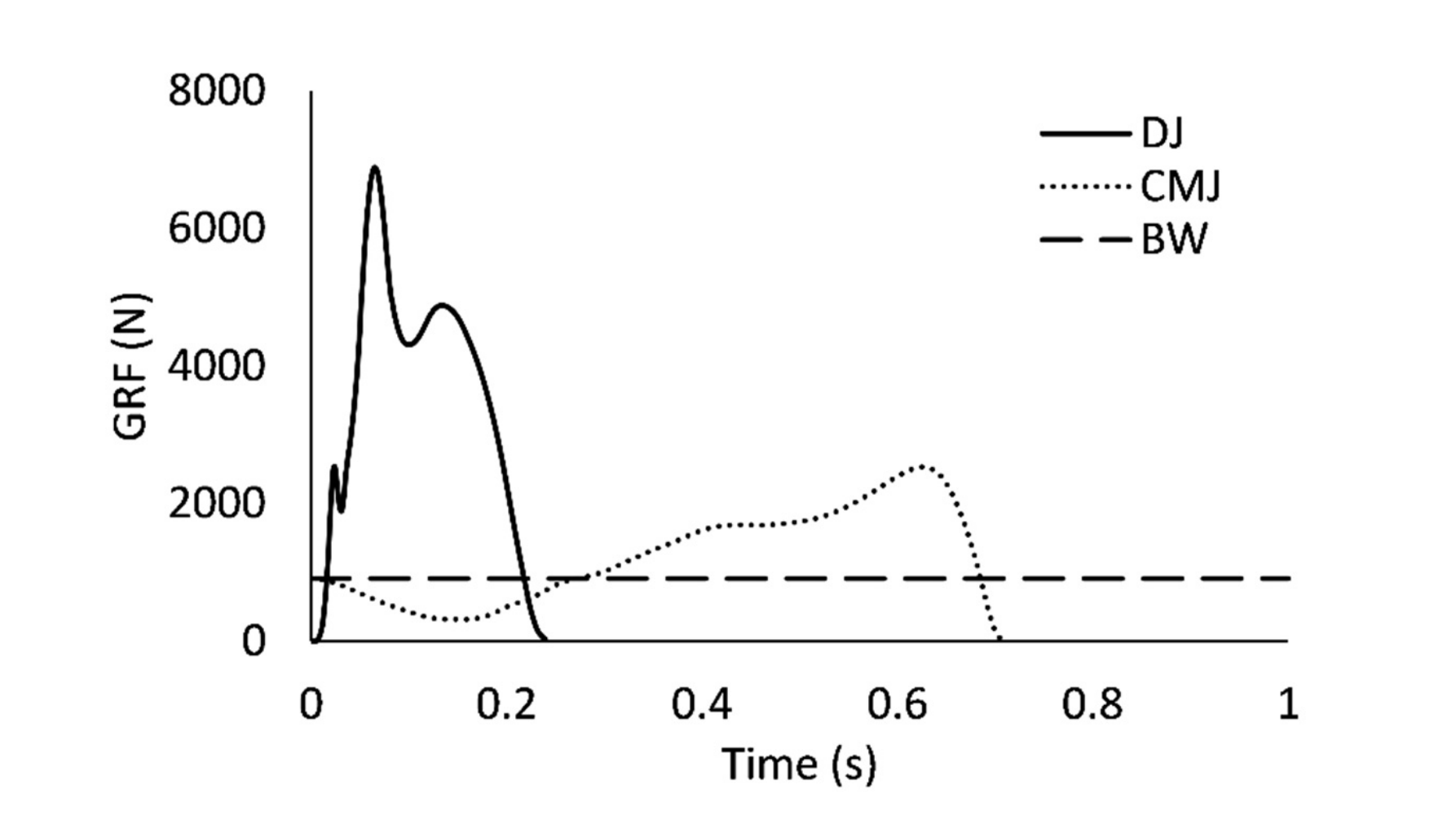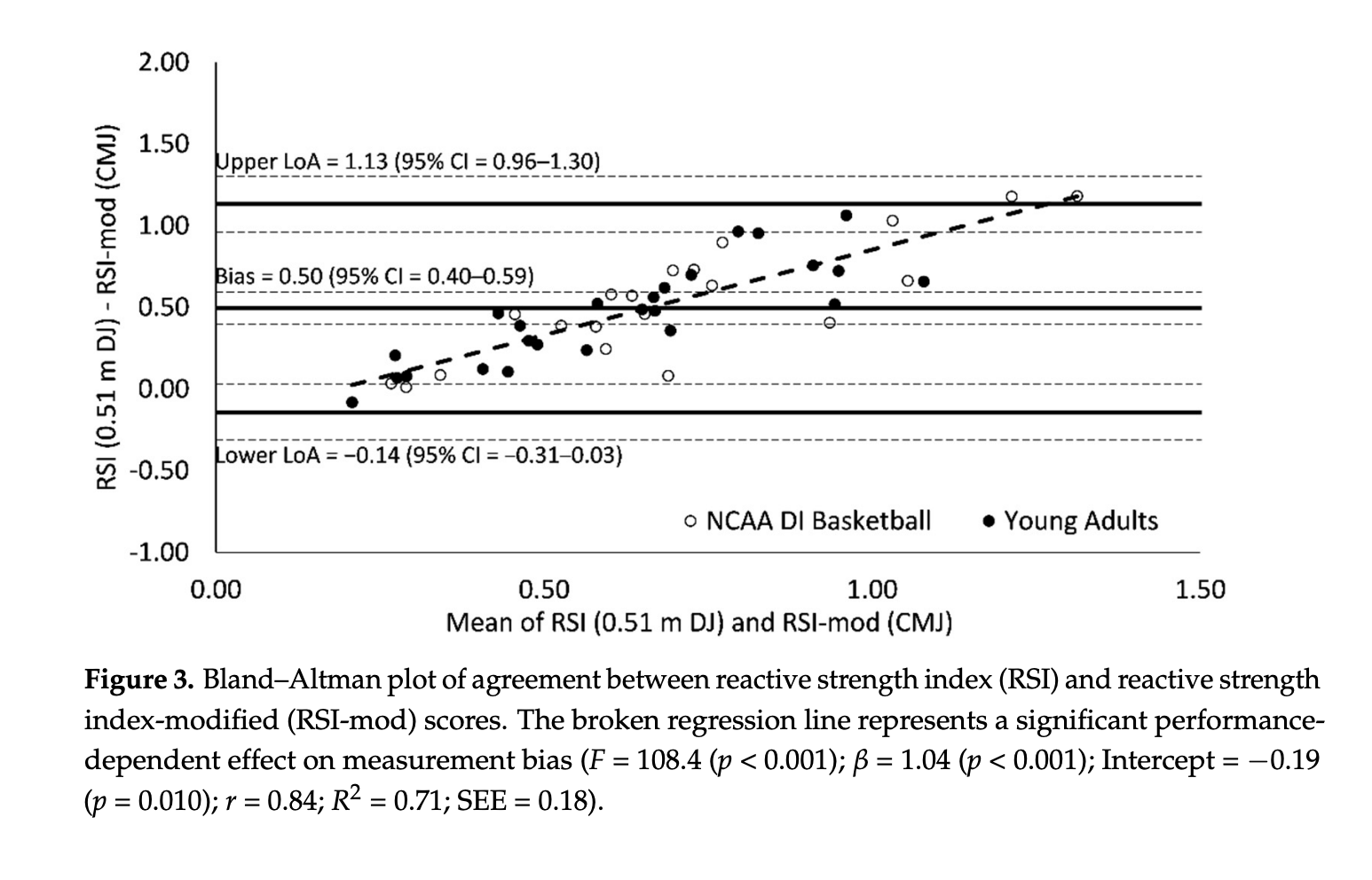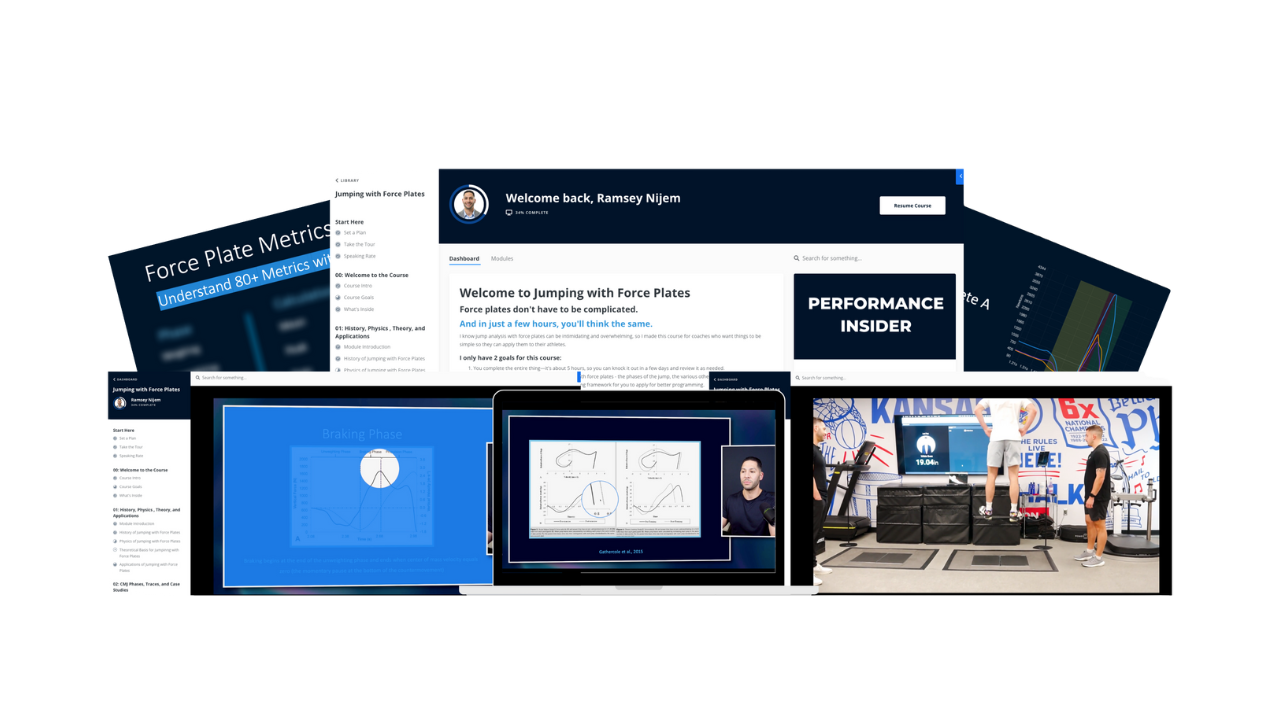I get asked about force plates metrics often. And one of the most common questions is "what is the difference between RSI and RSI-Mod?"
Coaches often treat RSI (from a drop/depth jump) and RSI-mod (from a countermovement jump) like they’re interchangeable “reactive strength” metrics.
Let's break down why the names may be similar, but the movements are not the same.
The Simplest and Fastest Way to Learn Jump Analysis with Force Plates
How closely are RSI and RSI-mod related, and do they actually agree enough to be used in place of each other?

What Did the Researchers Do?
Jump Tests
- A mixed sample of NCAA Division I basketball athletes (n=21) and active young adults (n=26) performed three depth jumps from 0.51, 0.66, and 0.81 m boxes and three CMJs.
- Arms were free for ecological validity.
- 2-D video and a force plates captured kinetics and kinematics.
Key Variables
- RSI = Jump height / Ground contact time from the depth jump.
- RSI-mod = Jump height / Time to take-off from the CMJ.
Analysis: Reliability (ICC, CV), repeated-measures ANOVA across conditions, linear regression for association, Bland–Altman for agreement.

What were the results?
Association
- RSI-mod and RSI were moderately associated (R² ≈ 0.20–0.47, depending on drop height).
- That means they share only 20–47% of variance.
Agreement
- The agreement between the two was poor.
- There was a significant measurement bias of ~0.50–0.57, with RSI scores consistently higher than RSI-mod, and very wide limits of agreement (≈1.27–1.51).
Performance-Dependent Bias
- The difference between metrics got larger as average performance increased.
- In other words, higher performers showed bigger divergences between RSI and RSI-mod.
Group means: RSI around ~1.00 across DJ heights; RSI-mod ~0.42; CMJ time to take-off was much longer than DJ ground contact time.


What Does This Mean?
- RSI and RSI-mod do not tell the same story, and treating them as interchangeable is a mistake; use each for what it actually captures.
- DJ-derived RSI likely reflects fast SSC qualities that resemble sport landings and quick rebound actions, with strong feedforward control and pre-activation.
- CMJ-derived RSI-mod reflects explosive output in a slower SSC context without a discrete impact, so it behaves more like a controlled power metric than “true” reactive strength under impact.
Limitations
- DJs were cued to jump “as high and as quickly as possible,” and many GCTs exceeded the classic <250 ms “fast SSC” heuristic, which can influence RSI values.
- RSI did not differ across drop heights, raising questions about the sensitivity of that specific protocol.
Coach’s Takeaway
- Use RSI to monitor fast SSC qualities from drop impacts and “hit-and-go” tasks.
- Use RSI-mod to track CMJ explosiveness and readiness when you want a low-skill, no-impact snapshot.
- Do not swap one for the other or compare them directly. Program and trend each metric within its own lane.
I hope this helps,
Ramsey
Reference
Louder T, Thompson BJ, Bressel E. (2021). Association and Agreement between Reactive Strength Index and Reactive Strength Index-Modified Scores. Sports, Access Full-Text Here





